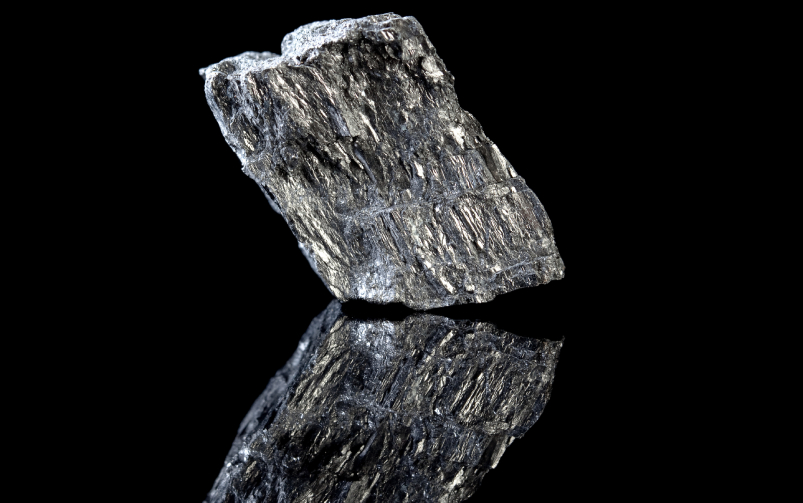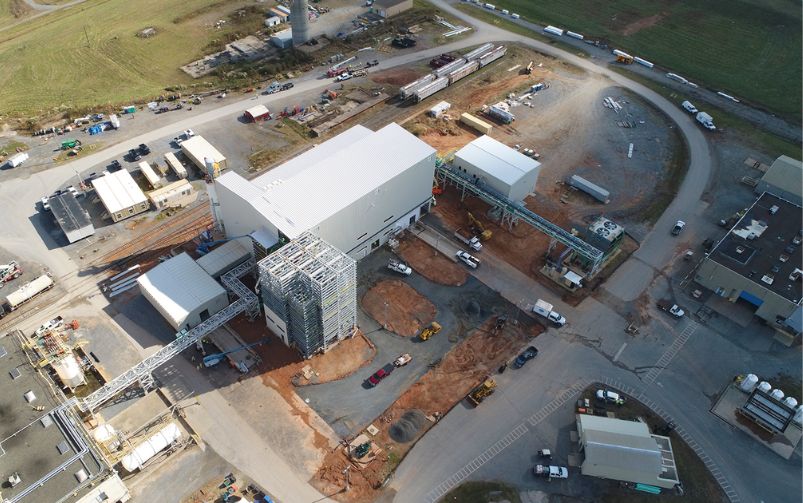The Agnico Eagle Mines Macassa mine team from Kirkland Lake District was one of the winners in the Ontario mine rescue district competitions. Courtesy of Workplace Safety North.
Welcome back to your weekly mining news recap, where we catch you up on some of the news you may have missed. This week’s headlines include copper not making the cut in the U.S. Geological Survey’s critical minerals list, Minto Metals stopping communication with its employees and mighty microbes that could speed up carbon sequestration.
Ford Motor Co. has announced multiple deals with lithium makers to ramp up its electric-vehicle production, one of which is Quebec-based Nemaska Lithium, as reported by Bloomberg. Nemaska Lithium is backed by Quebec’s government and Livent Corp., the world’s third-largest producer of lithium. Ford will be Nemaska’s first customer and the company will deliver as much as 13,000 tons of lithium hydroxide per year to the automaker. Ford expects to produce two million electric vehicles a year by 2026. Ford CEO Jim Farley said the company is facing processing constraints partly due to the Biden administration’s efforts to encourage companies to depend less on China by sourcing components and materials from North American and U.S. free trade partners.
It is timely, then, that earlier this spring Sayona Québec restarted its North American Lithium (NAL) operation in Abitibi, Quebec, which is North America’s only major source of spodumene concentrate, as reported by Matthew Parizot in the May issue of CIM Magazine. The mine anticipates producing 226,000 tonnes of spodumene concentrate over the next four years. The company already has two major buyers lined up for the mine’s product: LG Chem and Tesla. A feasibility study released on April 14 stated that NAL has an after-tax net present value of approximately $1.4 billion with an eight per cent discount rate and a 20-year life of mine.
Mining firms have a lower proportion of women in management and board positions when compared to other sectors, data from S&P Global Commodity Insights shows, as reported by Reuters. Only 12.1 per cent of the highest-ranking executive positions were held by women in April 2023 across more than 2,000 publicly listed miners, which was only an increase of 1.6 percentage points from October 2021. When compared to data across sectors globally, women occupy 42.7 per cent of senior and leadership roles. Implicit biases in selection and promotion processes and a lack of role models, mentoring and sponsorship may explain the slow progress of gender diversity in the industry, according to Barbara Dischinger, director of London-based International Women in Mining.
The measures in the U.S. Inflation Reduction Act and Defense Production Act could create mutual benefits for Canadian and American companies in the energy transition, as reported by Business in Vancouver. Some Canadian companies are concerned these acts favour American-made components in electric vehicles and other technologies, which would shut them out of the U.S. market. However, U.S. Ambassador to Canada David Cohen said it would create opportunities for the U.S., Canada and First Nations to open new avenues for trade, manufacturing and clean energy and to strengthen regional supply chains. Cohen pointed to Volkswagen Group’s plan to invest $7 billion in a new electric vehicle gigafactory in St. Thomas, Ontario as a recent example of Canadian and American incentives working in concert to draw investment to North America.
New research shows that bioleaching can be used in combination with the process of microbial mineral carbonation to store atmospheric carbon dioxide in mine tailings. The paper’s authors, from the University of Waterloo and Trent University, noted that alkaline tailings from diamond, nickel, cobalt and other metal mines are best suited for enhanced weathering and mineral carbonation, while at the same time able to extract valuable commodities via bioleaching. The authors wrote that tailings at many legacy facilities contain low concentrations of critical minerals, including nickel and cobalt, that were not previously economical to extract. Additionally, recovering metals from waste could reduce the risk of residual metals entering waterways.
After the Minto Metals copper mine in Yukon abruptly closed last week, former mine workers said the company had abandoned them without communication, as reported by CBC. About 180 employees were laid off after the mine closed. Those who were on site were transported to Whitehorse but no further. The company sent a letter to employees that stated they wouldn’t be able to pay severance. Its entire board of directors resigned last weekend. Minto Metals still owes royalties to the Selkirk First Nation and owes about $75 million in security to the Yukon government for continued operation of the mine.
Fortuna Silver Mines poured first gold at its Séguéla mine in Côte d’Ivoire on Wednesday, transitioning the mine from commissioning to its ramp-up phase. The mine is anticipated to produce 60,000 to 75,000 ounces of gold this year at an all-in sustaining cost (AISC) of between US$880 and US$1,080 per ounce of gold. Dinah Zeldin wrote in a profile of the mine in the May issue of CIM Magazine that the AISC is lower at Séguéla compared to other gold projects around the world due to the high grade of Séguéla’s gold and the mine’s proximity to existing infrastructure.
The head of the U.S. Geological Survey (USGS) is standing by its decision to exclude copper from its 2022 list of Critical Minerals, which is an official list of commodities at risk of undersupply, while nickel and zinc made the cut, as reported by E&E News. USGS director David Applegate explained in a letter to U.S. congressmen and senators that domestic resources, trade deals and other supplies are reducing vulnerabilities in copper supplies. However, the Copper Development Association (CDA) noted that today’s figures show copper’s supply risk score is now above the threshold for automatic inclusion on the 2022 Critical Minerals list. CDA president and CEO, Andrew G. Kireta, stated that the USGS based its decision on outdated copper trade data from 2014 to 2018. Mining companies, including Rio Tinto and BHP, are advocating for the USGS to revisit the decision. The European Commission and the Canadian Critical Minerals Strategy include copper on their lists of critical minerals.
S&P Global predicts that Canadian oil sands production will reach 3.7 million barrels per day by 2030, which is the first time the analytics firm has raised its estimates in half a decade, as reported by Reuters. This represents an output estimate increase of 140,000 barrels per day compared to last year’s outlook and the start of an “era of optimization,” according to S&P Global Commodity Insights, due to production being moved to high-potential areas next to existing developments. The firm added that production is anticipated to slow in the mid-2020s and decline in the early 2030s.
The winners of the 2023 Ontario mine rescue district competitions were announced by Ontario Mine Rescue. Eight districts with volunteer mine workers competed from May 10 to 12, and the winners will move on to the provincial competition taking place from June 13 to 16. The exercise involved teams of five finding and rescuing a severely injured miner after a mine collapse and extinguishing a small fire. Ontario Mine Rescue trains thousands of volunteers to respond to a wide variety of incidents in provincial mines.
That’s all for this week. If you’ve got feedback, you can always reach us at editor@cim.org. If you’ve got something to add, why not join the conversation on our Facebook, Twitter, LinkedIn or Instagram pages?




